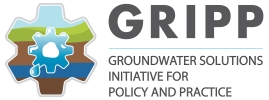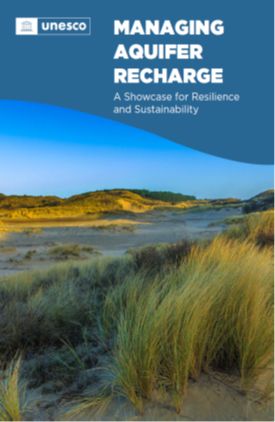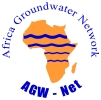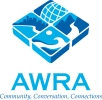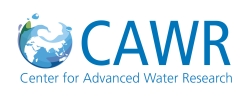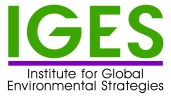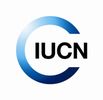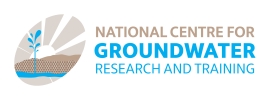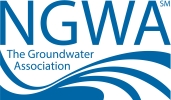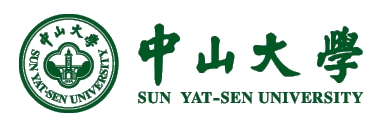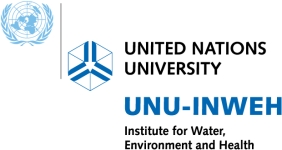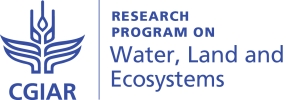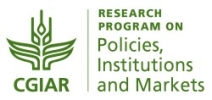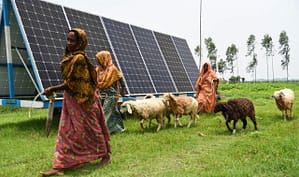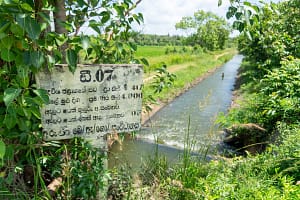The United Nations Educational, Scientific and Cultural Organization – Intergovernmental Hydrological Programme (UNESCO-IHP), in partnership with the Commission on Managing Aquifer Recharge under the International Association of Hydrogeologists (IAH) and the Groundwater Solutions Initiative for Policy and Practice (GRIPP), has published a new book titled Managing Aquifer Recharge: A Showcase for Resilience and Sustainability.
The book showcases 28 real-life examples of Managed Aquifer Recharge (MAR) from around the world. It illustrates the potential of MAR in addressing a cross-section of the United Nations Sustainable Development Goals (SDGs) related to climate resilience, water and food security, and human and ecosystem health, through improvements in the quantity and quality of water supplies and buffering them against droughts, floods and other emergencies. Besides the obvious target context of arid and semi-arid areas with high interannual or long-term rainfall variability, MAR is increasingly applied as a means to overcome water shortages and insecurity in growing urban centers where the land footprint is less and opportunities for the use of multiple water sources, including unconventional water sources, are eminent. MAR also helps the fight against seawater intrusion in coastal and small island contexts.
Many MAR schemes have been in existence for a long time, the earliest covered in the book was implemented in 1907, but with a significant increase in the latter part of the 20th century, illustrating their success as well as increasing uptake and adoption. Scheme sizes range from community to state and transboundary levels, demonstrating the versatility and incremental virtues of MAR. Purposes and approaches range from increasing and assuring water availability through improved storage in urban as well as rural areas, harnessing floodwaters and mitigating disasters, to payment for ecosystem services linking stakeholders in recharge areas with downstream urban users. MAR technologies and approaches may be solely targeted towards enhancing ecosystem services in the form of improved terrestrial and aquatic habitats, environmental flows, water quality from natural purification in soils and aquifers, and public amenities associated with managed recharge facilities. Many times, these impacts are co-benefits to the overarching storage goal, but MAR schemes are often characterized by the achievement of several conjunctive goals particularly relevant under a changing climate.
A transversal cost-benefit analysis compiled as part of the book shows that MAR, on average, offers a 50% reduction in costs compared with conventional alternatives. When evaluated for its environmental and social sustainability using a basic qualitative technique, most schemes were found to be sustainable.
The co-editors of the book, Yan Zheng, Andrew Ross, Karen Villholth and Peter Dillon, are grateful to all who made this publication possible, especially the case study contributors who represent implementers and operators comprising universities, research centers, water utilities, and other public and private institutions who went to considerable lengths to provide detailed accounts of their schemes from concept to implementation, enabling detailed and comparative synthesis across the cases.
The book demonstrates that MAR is a well-established technology and approach in the fight against climate change and to ensure water security. It also highlights that with a proper knowledge base, and participatory and long-term monitoring and management efforts, MAR can provide cost-effective solutions across a wide range of SDGs as well as for diverse biophysical as well as socioeconomic settings.
This book is a welcome addition in anticipation of the theme for World Water Day 2022 – ‘Groundwater: Making the Invisible Visible’.
Citation:
Zheng, Y.; Ross, A.; Villholth, K.G.; Dillon, P. (Eds.) 2021. Managing aquifer recharge: A showcase for resilience and sustainability. Paris, France: United Nations Educational, Scientific and Cultural Organization (UNESCO). 379p. ISBN: 978-92-3-100488-9
Read the UNESCO news piece on the book
Sign up for GRIPP news and updates
Sign up for the Call to Action on Global Groundwater Sustainability






